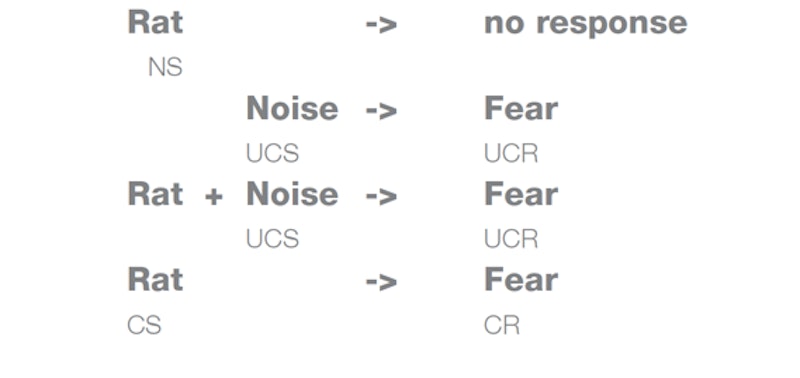Study Notes
Classical Conditioning
- Level:
- AS, A-Level
- Board:
- AQA, Edexcel, OCR, IB
Last updated 22 Mar 2021
Classical conditioning is a type of learning in which an existing involuntary reflex response is associated with a new stimulus.
Introduction to Classical Conditioning
The new stimulus is presented at the same time as another stimulus that already produces the response. After the two have been presented together many times, the new stimulus should produce the response even if the original stimulus is not present.
Classical conditioning was discovered by Ivan Pavlov while he was studying salivation in dogs. He observed that his dogs salivated when his assistants opened the doors to their cages and inferred that they must have learned to associate the opening of the doors with food.
He tested this by associating the ringing of a bell with the food so that the dogs would salivate when they heard the bell and spent many years studying the factors that affected the speed and strength of learning of this association as well as how it might explain apparently complex behaviour like neurosis in humans.
In a typical experiment done by Pavlov, the dog would be strapped in a harness with an apparatus that allowed precise measurement of the amount of saliva it produced. A bell would be rung and the amount of saliva measured. Food would be presented and the amount of saliva measured. Then the bell and food would be presented at the same time and the amount of saliva measured. This would be repeated a set number of times, then the bell would be rung without presentation of the food, and the amount of saliva would be measured to test the strength of the conditioned response that had been learned.
To explain the process of classical conditioning, you need to be aware of several key terms:
Neutral stimulus (NS)
An event that does not produce a response
Unconditioned stimulus (UCS)
An event that produces an innate, unlearned reflex response
Conditioned Stimulus (CS)
An event that produces a learned response
Unconditioned Response (UCR)
An innate, unlearned reflex behaviour that an organism produces when exposed to an unconditioned stimulus
Conditioned Response (CR)
A learned physical reflex behaviour that an organism produces when exposed to a conditioned stimulus
The process of classical conditioning is best represented like this:

Here are examples of this chart applied to Pavlov’s own research and to Watson and Rayner (1920) who demonstrated the learning of a phobia through classical conditioning in a boy called Little Albert.


Examples of Classical Conditioning
You can probably recognise classical conditioning in your own behaviour with ease. If your school or college rings bells at the end of lessons, you probably find it hard not to stand up, or if there are bells for lunch you probably find yourself hungry when they ring. You may also find that being given money makes you happy, and it can be argued that this response has been learned
Classical conditioning may also play a role in the learning of phobias. Behaviourists argue that phobias are learned when a neutral object is associated with a stimulus that already causes fear.
You might also like
Phobias (Introduction)
Study Notes
Characteristics of Phobias
Study Notes
Learning Approaches - Social Learning Theory
Study Notes
Observational Learning
Study Notes
Origins of Social Learning Theory
Study Notes
Daily Email Updates
Subscribe to our daily digest and get the day’s content delivered fresh to your inbox every morning at 7am.
Signup for emails